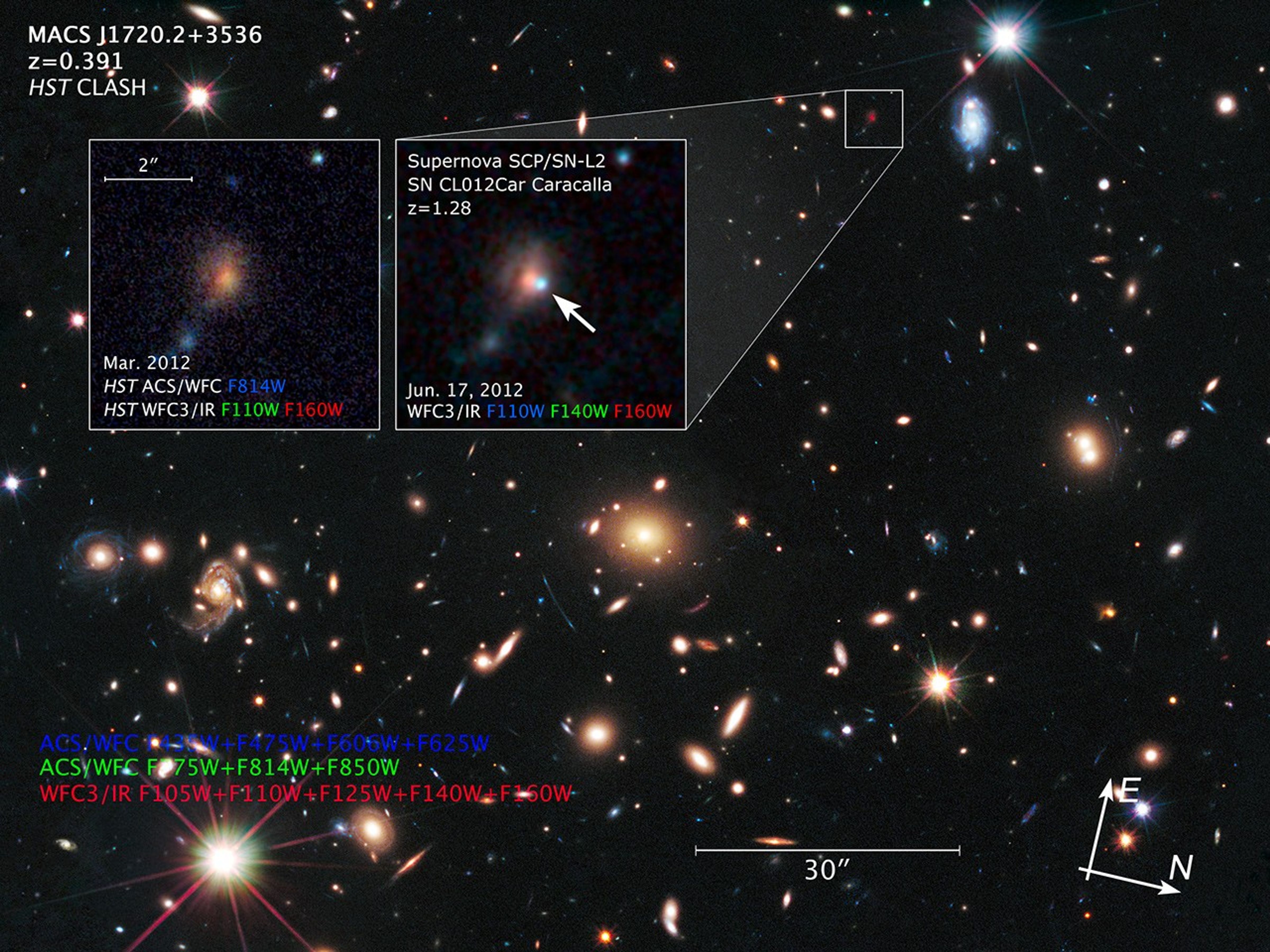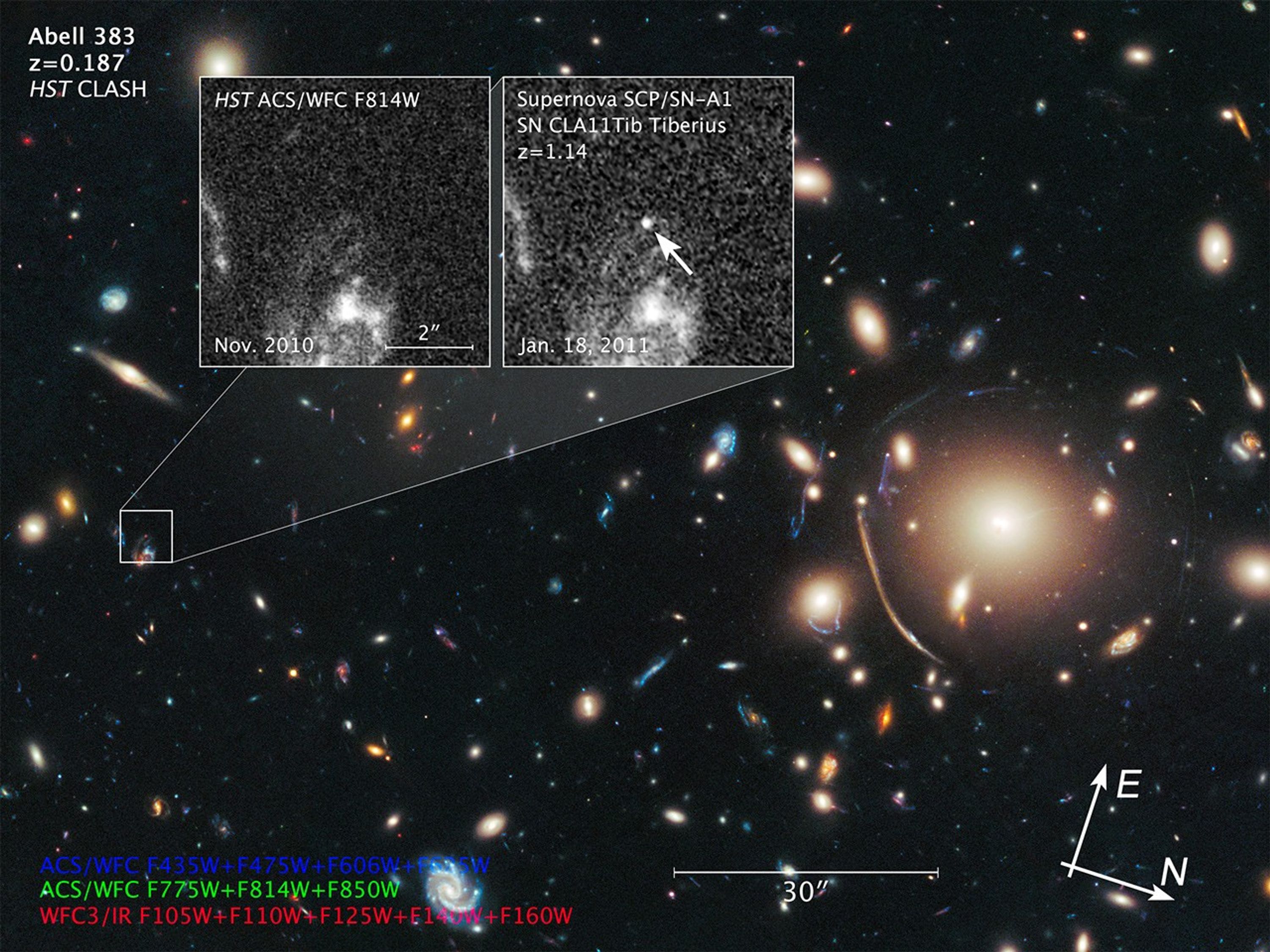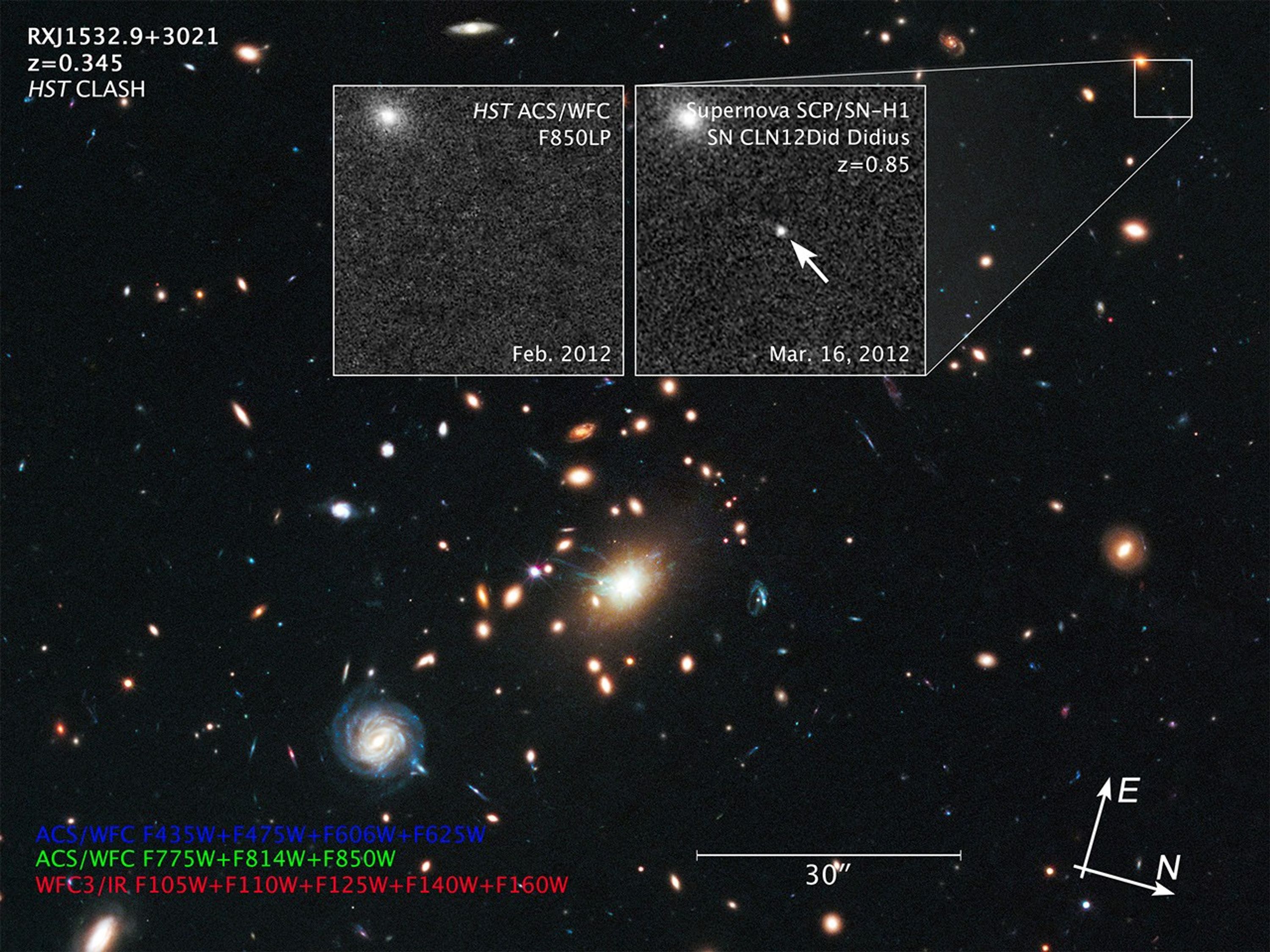1 min read
Remote Supernova Magnified by Massive Galaxy Cluster RXJ1532.9+3021
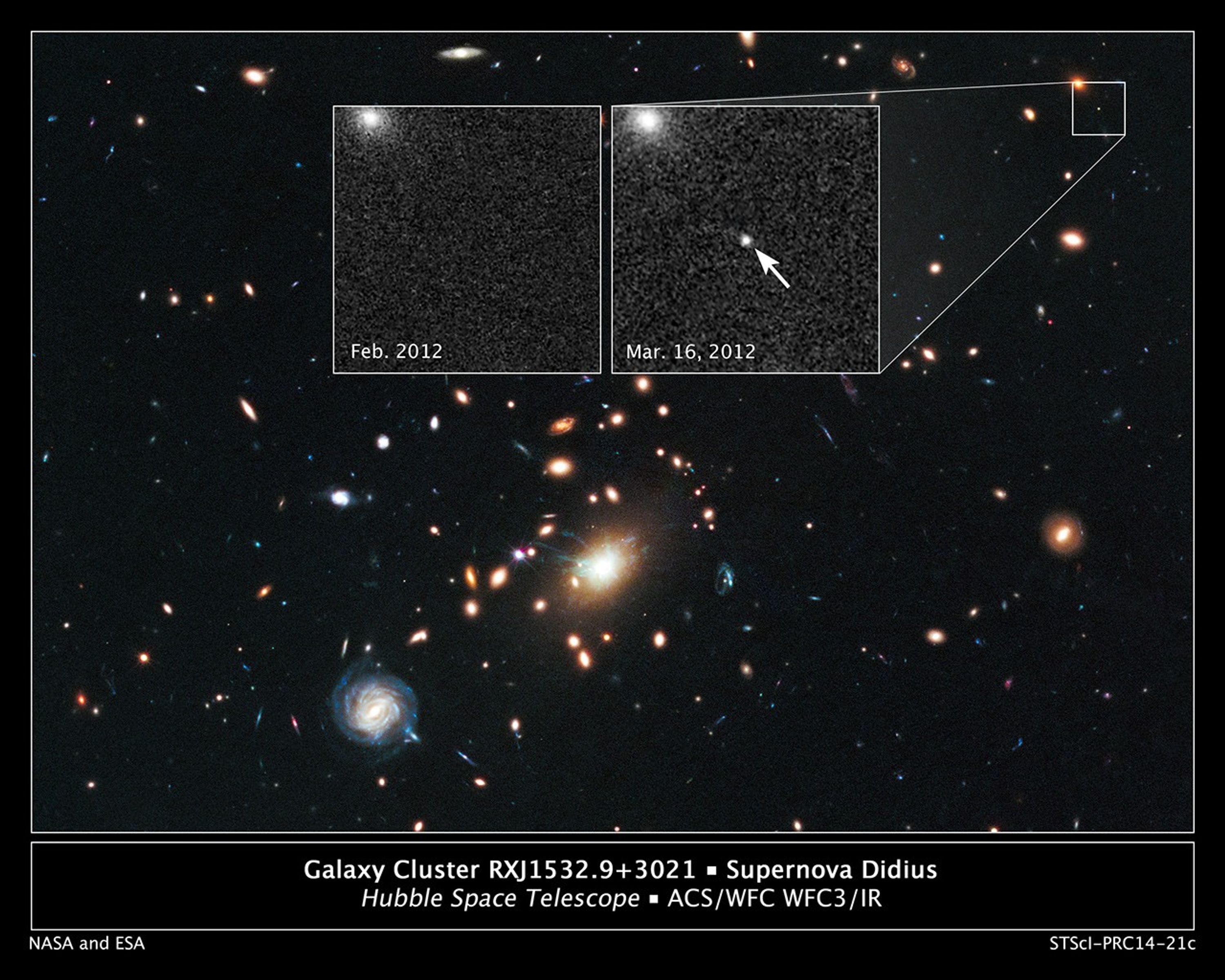
The heart of a vast cluster of galaxies called RXJ1532.9+3021 is shown in this image, taken in visible and near-infrared light by NASA's Hubble Space Telescope.
The galaxy cluster is so massive that its gravity distorts, brightens, and magnifies light from more-distant objects behind it, an effect called gravitational lensing. The small white box at upper right marks the location of an exploding star called a supernova, located far behind the cluster.
An enlarged view of the supernova, nicknamed Didius after the second century Roman emperor Didius Julianus, is shown in the inset image at top right, taken on March 16, 2012. The supernova is the white dot in the center of the image. The bright blob at upper left is the core of the host galaxy. The supernova is seen as it appeared 7 billion years ago.
The inset image at top left, taken in February 2012, shows the same region before the supernova blast. This image underscores the transient nature of exploding stars. The supernova is a member of a special group of exploding stars called Type Ia, prized by astronomers because they provide a consistent level of peak brightness that makes them reliable for making distance estimates.
Both inset images were taken in visible light with Hubble's Advanced Camera for Surveys.
Finding a gravitationally lensed Type Ia supernova gives astronomers a unique opportunity to check the optical "prescription" of the foreground lensing cluster. The supernova is one of three exploding stars discovered in the Cluster Lensing And Supernova survey with Hubble (CLASH), and was followed up as part of a Supernova Cosmology Project HST program. CLASH is a Hubble census that probed the distribution of dark matter in 25 galaxy clusters. Dark matter cannot be seen directly but is believed to make up most of the universe's matter.
The image of the galaxy cluster was taken between February and April 2012 by Hubble's Wide Field Camera 3 and Advanced Camera for Surveys.
About the Object
- R.A. PositionR.A. PositionRight ascension – analogous to longitude – is one component of an object's position.15h 32m 53.79s
- Dec. PositionDec. PositionDeclination – analogous to latitude – is one component of an object's position.30° 20' 57.98"
About the Data
- Data DescriptionData DescriptionProposal: A description of the observations, their scientific justification, and the links to the data available in the science archive.
Science Team: The astronomers who planned the observations and analyzed the data. "PI" refers to the Principal Investigator.The image was created from Hubble data from proposal 12454 (PI: M. Postman, STScI) - InstrumentInstrumentThe science instrument used to produce the data.HST>ACS/WFC and HST>WFC3/IR
- Exposure DatesExposure DatesThe date(s) that the telescope made its observations and the total exposure time.February - April, 2012
- FiltersFiltersThe camera filters that were used in the science observations.Galaxy cluster image: ACS/WFC: F435W, F475W, F606W, F625W, F775W, F814W, and F850W WFC3/IR: F105W, F110W, F125W, F140W, and F160W February 2012 inset image: ACS/WFC: F850LP March 2012 inset image: ACS/WFC: F850LP
- Object NameObject NameA name or catalog number that astronomers use to identify an astronomical object.RXJ1532.9+3021 and Supernova Didius
- Object DescriptionObject DescriptionThe type of astronomical object.Galaxy Cluster and Gravitationally Lensed Supernovae
- Release DateMay 1, 2014
- Science ReleaseHubble Astronomers Check the Prescription of a Cosmic Lens
- Credit

Galaxy cluster image: Blue: F435W + F475W + F606W + F625W Green: F775W + F814W + F850W Red: F105W + F110W + F125W + F140W + F160W
Related Images & Videos
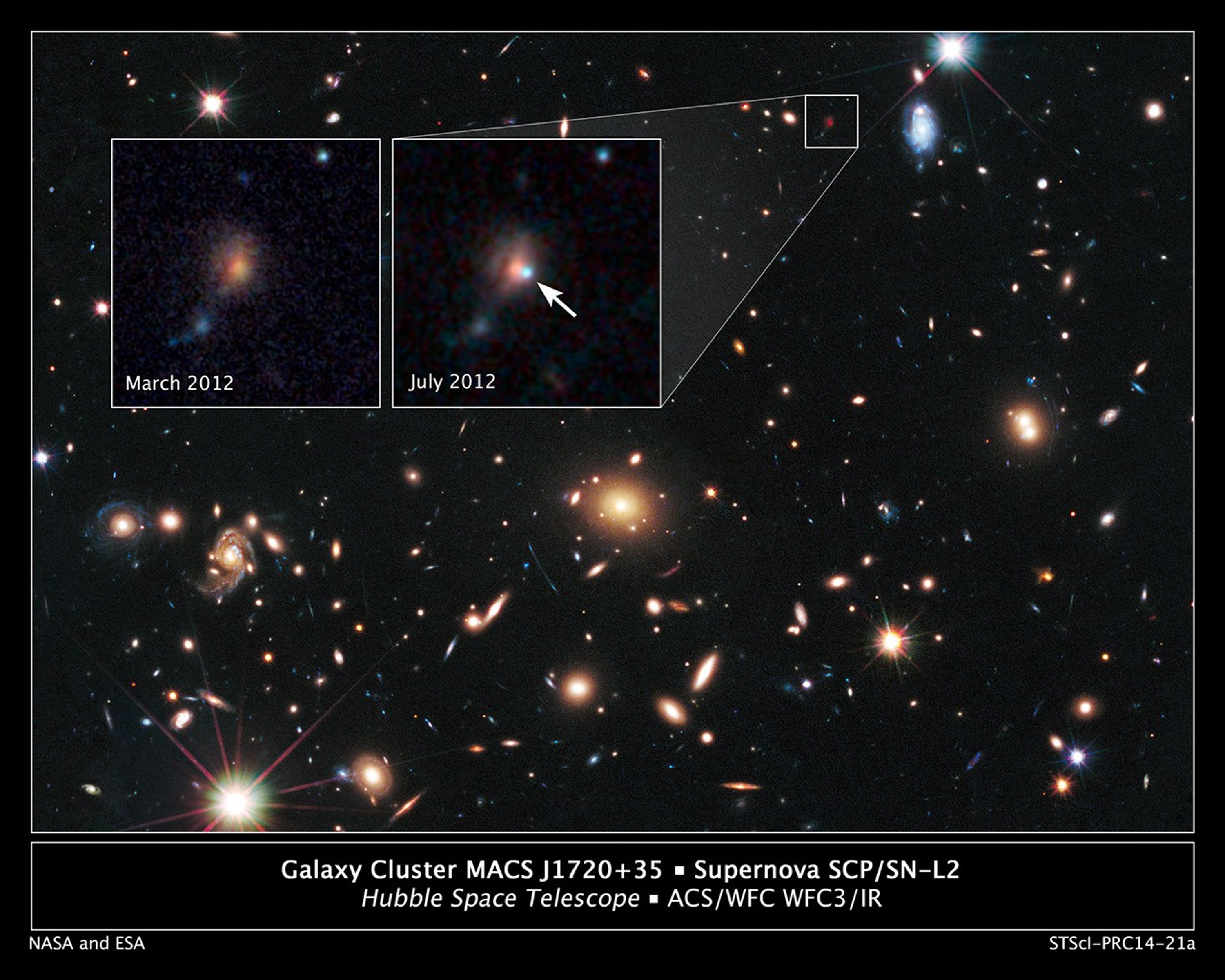
Remote Supernova Magnified by Massive Galaxy Cluster MACSJ1720
The heart of a vast cluster of galaxies called MACS J1720+35 is shown in this image, taken in visible and near-infrared light by NASA's Hubble Space Telescope. The galaxy cluster is so massive that its gravity distorts, brightens, and magnifies light from more-distant objects...
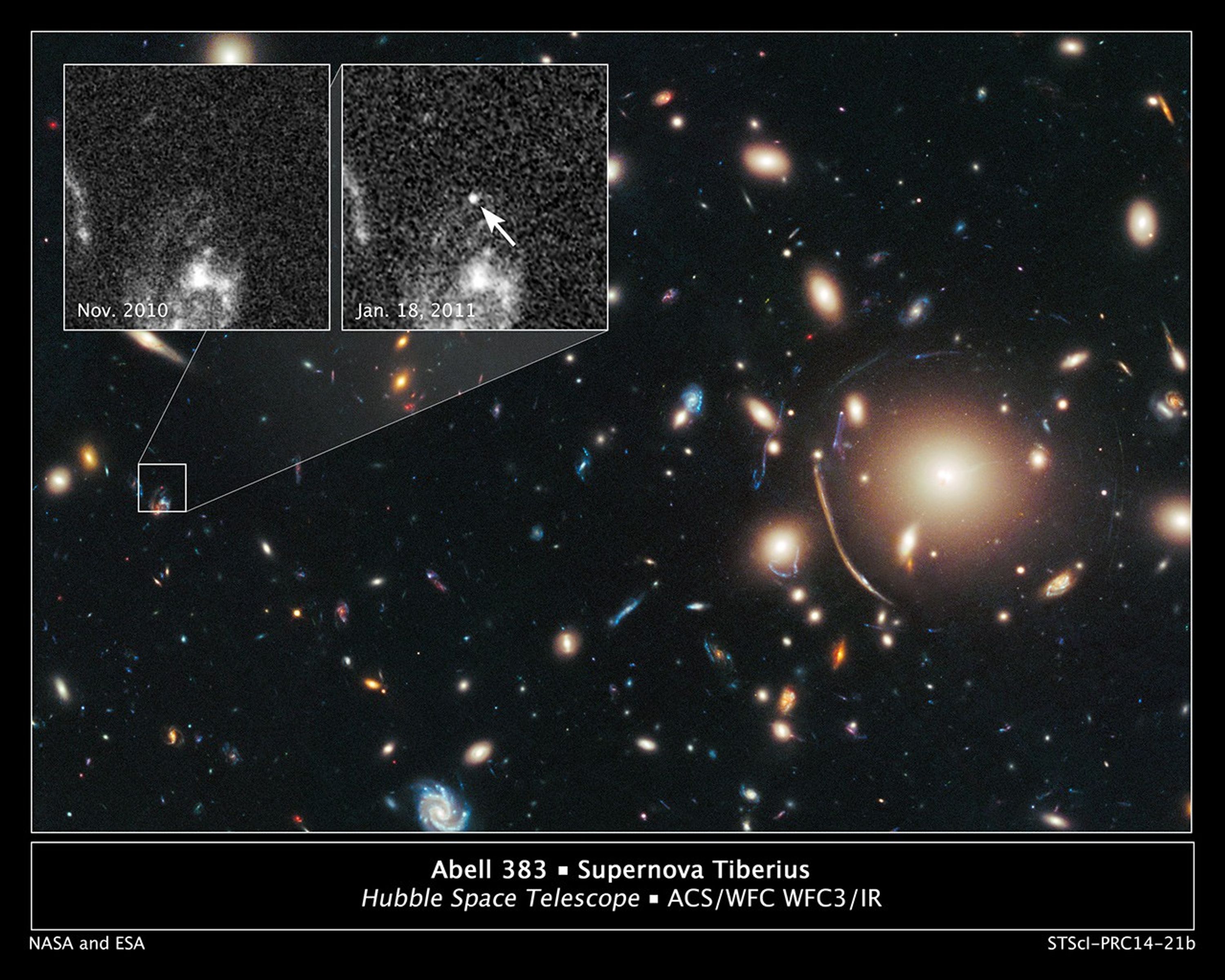
Remote Supernova Magnified by Massive Galaxy Cluster Abell 383
The heart of a vast cluster of galaxies called Abell 383 is shown in this image, taken in visible and near-infrared light by NASA's Hubble Space Telescope. The galaxy cluster is so massive that its gravity distorts, brightens, and magnifies light from more-distant objects behind...
Share
Details
Claire Andreoli
NASA’s Goddard Space Flight Center
Greenbelt, Maryland
claire.andreoli@nasa.gov


































